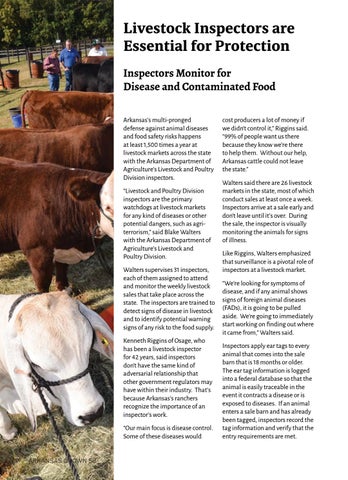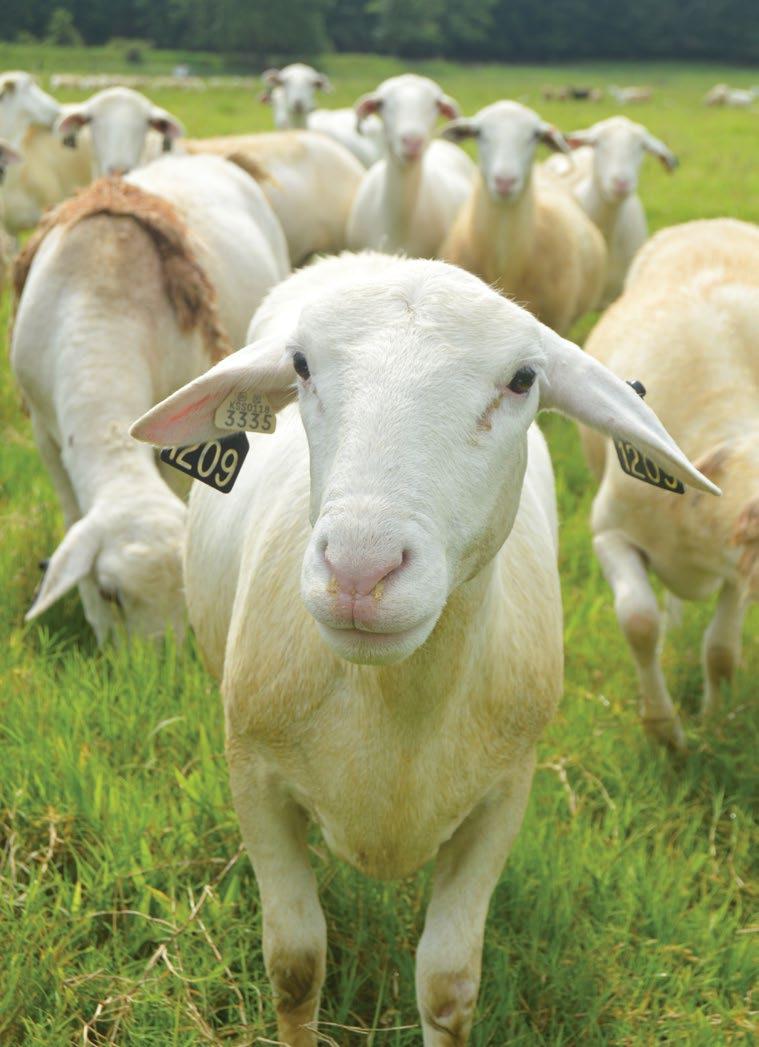Livestock Inspectors are Essential for Protection Inspectors Monitor for Disease and Contaminated Food Arkansas’s multi-pronged defense against animal diseases and food safety risks happens at least 1,500 times a year at livestock markets across the state with the Arkansas Department of Agriculture’s Livestock and Poultry Division inspectors. “Livestock and Poultry Division inspectors are the primary watchdogs at livestock markets for any kind of diseases or other potential dangers, such as agriterrorism,” said Blake Walters with the Arkansas Department of Agriculture’s Livestock and Poultry Division. Walters supervises 31 inspectors, each of them assigned to attend and monitor the weekly livestock sales that take place across the state. The inspectors are trained to detect signs of disease in livestock and to identify potential warning signs of any risk to the food supply. Kenneth Riggins of Osage, who has been a livestock inspector for 42 years, said inspectors don’t have the same kind of adversarial relationship that other government regulators may have within their industry. That’s because Arkansas’s ranchers recognize the importance of an inspector’s work. “Our main focus is disease control. Some of these diseases would ARKANSAS GROWN 56
cost producers a lot of money if we didn’t control it,” Riggins said. “99% of people want us there because they know we’re there to help them. Without our help, Arkansas cattle could not leave the state.” Walters said there are 26 livestock markets in the state, most of which conduct sales at least once a week. Inspectors arrive at a sale early and don’t leave until it’s over. During the sale, the inspector is visually monitoring the animals for signs of illness. Like Riggins, Walters emphasized that surveillance is a pivotal role of inspectors at a livestock market. “We’re looking for symptoms of disease, and if any animal shows signs of foreign animal diseases (FADs), it is going to be pulled aside. We’re going to immediately start working on finding out where it came from,” Walters said. Inspectors apply ear tags to every animal that comes into the sale barn that is 18 months or older. The ear tag information is logged into a federal database so that the animal is easily traceable in the event it contracts a disease or is exposed to diseases. If an animal enters a sale barn and has already been tagged, inspectors record the tag information and verify that the entry requirements are met.


















